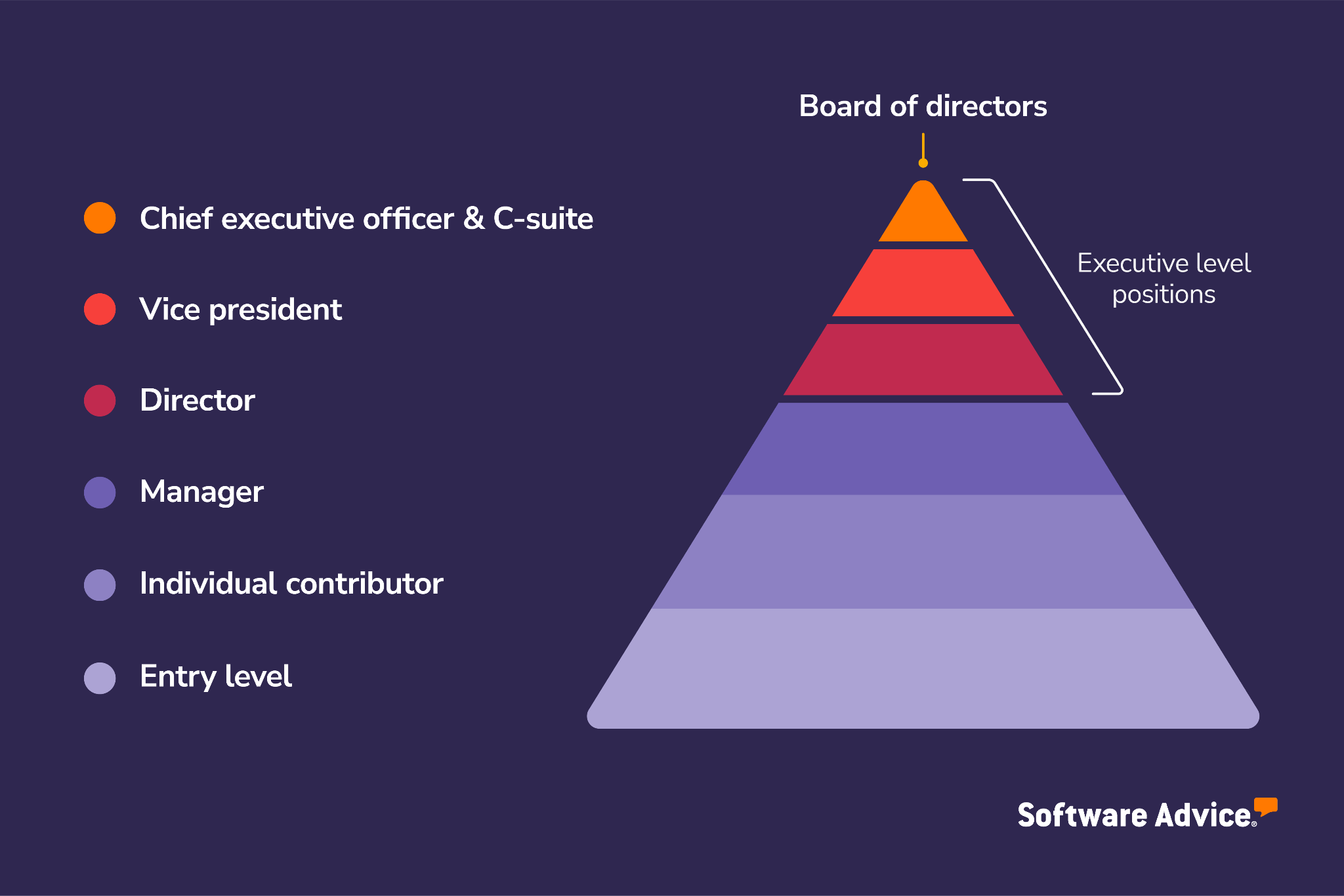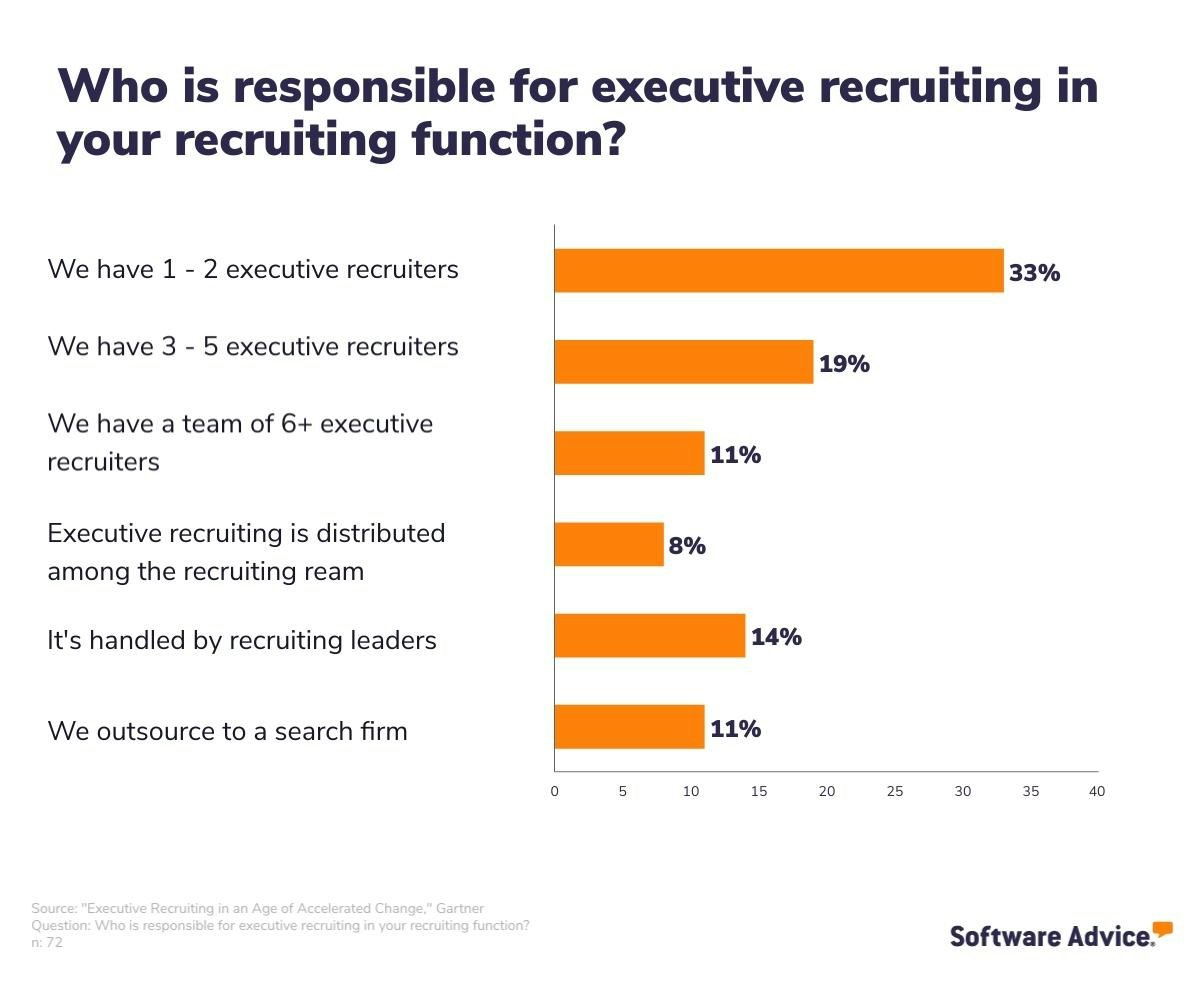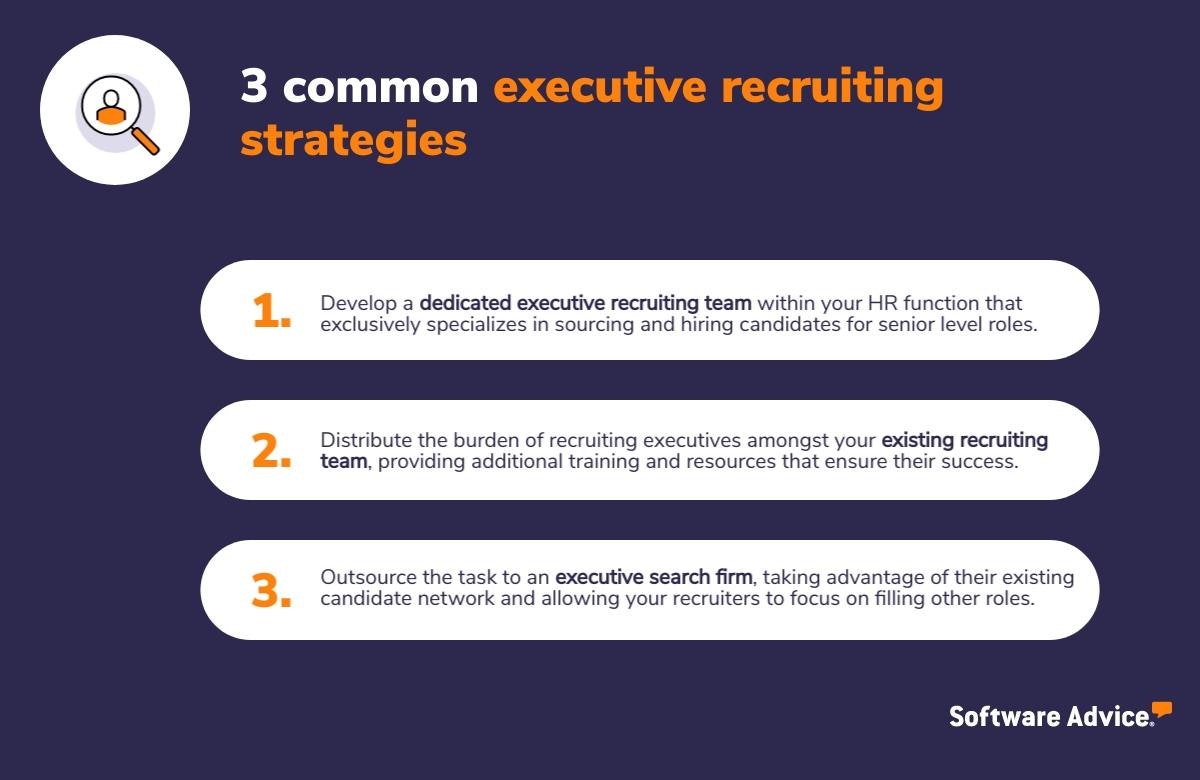Recruiting Executives? Read This First.
No matter the industry, recruiting and preparing organizational leaders to step into C-level roles is an ongoing responsibility for HR professionals. And with 10,000 baby boomers hitting retirement age every day between now and 2030, identifying the next generation of leaders is becoming an increasingly urgent task.[1]
If you’re a recruiter or hiring manager with minimal experience recruiting executives, this guide will prepare you to build out your leadership bench. In it, we’ll give an overview of the three main strategies used by HR professionals to recruit executive leaders and provide tips that will help you decide which approach is best for your business.
Let’s start with the basics: What is executive recruiting?
Executive recruiting refers to the process of sourcing and engaging with candidates for senior-level positions. Because of the high stakes associated with placing C-level leaders, executive recruiting is often either outsourced to executive search firms or seen as its own function within the HR department.

What is an executive search firm?
Executive search firms are third-party organizations that specialize in recruiting for senior level positions. Even if a business has their own recruiting team, they may opt to pay an executive search firm to find qualified executives and negotiate with them—more on this later on.
How do businesses typically handle recruiting executives?
Based on a survey run by Gartner[2], there are three main tactics HR teams use when it comes to recruiting executives:
Dedicated executive recruiters within the HR department manage these openings.
Existing recruiting team members, including department leaders, share the responsibility.
An executive search firm is hired to fill the role.

We’ll talk about each option in more detail below, including who the strategy works best for and tips for deploying it at your business.
Use in-house executive recruiters to fill C-level positions
63% of HR leaders stated that they have one or more dedicated executive recruiters in-house, making it the most common strategy used to fill senior roles by far.[2]
There are a few drivers behind businesses’ preferences to bring this responsibility in-house.
For starters, the cost of outsourcing this task is rising. The overall fee charged by a search firm is estimated to be 35% of the candidate’s first-year salary, which, as you can imagine, quickly adds up. Especially considering that the median number of executive positions the average recruiter is hiring for is steadily increasing as well. For example, the average recruiter filled 25 executive positions in 2016, 49 in 2017, and 60 in 2018.[2]
On top of that, it’s no secret that we’re currently in an era where business models are constantly evolving, making it difficult for external agencies to possess the organizational familiarity that’s necessary to make a high-quality, senior-level hire.
Who this strategy works best for: Large businesses (500+ employees) that frequently need to fill executive-level positions.
How to deploy this strategy at your organization:
Start small: You don’t need an entire team of executive recruiters right off the bat. Instead, we recommend hiring just one or two experienced executive recruiters—or promote an existing recruiter within your organization into this new position.
Create a unique recruiting process for C-level roles: Because the stakes are so high, there should be some differences between your process for hiring executives versus all other employees. For example, more lead time should be given to executive recruiters to understand the position they’re hiring for, and steps that may be overlooked for other positions (such as creating a candidate persona and requisitioning employee referrals) should be expected for these roles.
Practice passive recruiting: The talent pool for executives is relatively small, which means that most qualified candidates will already be employed elsewhere. Because of this, passive recruiting is the most effective way to engage with senior executives.
Further reading: Passive Recruiting: Playing The Long Game in Talent Acquisition
Distribute the responsibility of hiring executives amongst your existing recruiting team
Just under a quarter (22%) of HR leaders reported that their existing recruiting teams share the workload when it comes to hiring executives.[2] And of those that opt to use this strategy, the responsibility is most often handled by recruiting leaders (as opposed to a recruiter).
The reason why this is the second most common strategy is simple: Not every organization has the resources or demand to make hiring executive recruiters or outsourcing the task to a firm a good business decision. Instead, it makes more sense to take advantage of existing resources to get the job done.
Who this strategy works best for: Small to midsize businesses (< 500 employees) who only need to fill executive-level positions a few times a year or less.
How to deploy this strategy at your organization:
Assign a point person: Designate a leader within your recruiting team who can own the process of executive recruiting. They will be responsible for assigning and assisting other team members with filling senior positions, and taking on tasks such as consulting with existing organizational leaders to determine essential skills needed in a candidate.
Tip
If the amount of senior-level roles you have to fill quarterly begins to pick up, consider promoting your point person into a permanent executive recruiter position.
Offer training related to hiring executives: If you plan to distribute executive recruiting duties amongst all of your recruiters, it’s essential to offer training and other resources that help them be successful. While you can develop your own training courses, some virtual courses on the topic already exist on websites such as Udemy.[3] At the very least, work with your recruiting director to determine how your process for recruiting executives will differ from that of other roles, and outline a list of best practices your team can look to for guidance.
Get existing organizational leaders involved: Whether it’s the business owner, CEO, or even a board member, it’s a good idea for a C-level executive to have their hand in the process of recruiting other executives. They may know of qualified candidates in their network they can refer to the role, but more importantly, they will work closer with the new executive than most others in the company, so having their approval and insight is a must.
Outsource the search for senior leaders to an executive search firm
Only 11% of HR leaders stated that their organization uses an executive search firm to fill senior positions.[2] Even still, this strategy should not be written off, because there are benefits to outsourcing this responsibility. For example, with a limited pool of executive talent, search firms have the advantage of sourcing qualified individuals from an established network of candidates.
But beyond that, search firms are typically made up of a team of high-performing headhunters, many of whom are industry experts and have built relationships with the candidates in their network.
The most commonly cited reasons why businesses use search firms:
The position they’re hiring for is niche
They want to take advantage of a search firm’s network
The position is critical to the success of the business
They need a certain level of confidentiality throughout the process
Their in-house recruiting team does not have sufficient bandwidth
Who this strategy works best for: Partnering with executive search firms can get expensive, which is why this strategy works best for established mid- to large-sized businesses who have a hiring need that falls into one of the use cases covered in the box above.
How to deploy this strategy at your organization:
Find the right search firm: It sounds simple, but there are a few things to consider when choosing a firm to partner with. First, do you need a firm that specializes in placing candidates in your industry? Next, would you prefer to work with a firm in your local area, or are you open to conducting meetings remotely? Think through factors such as these while you look for a firm that’s a good fit, and if possible, ask peers at other businesses who’ve had success with an executive search firm for a referral.
Define what the ideal candidate looks like: Not being specific about what you’re looking for can lead to the very expensive mistake of hiring the wrong person. With that in mind, a hiring manager on your team should treat the position as if they were responsible for filling it, defining the soft and hard skills you need in an executive.
Assemble a search committee: Committee members will be responsible for defining the ideal candidates’ traits, communicating with the executive search consultant, providing feedback on job postings, and holding interviews with candidates. Your committee should include the hiring manager, as well as employees who hold a position at the same level or higher than the one you’re looking to fill.
How will you find your next organizational leader?
The difference between a good company and a great one is often determined by its leaders. Having the right executives in office can bolster your bottom line, while having the wrong ones can lead to a total breakdown—John Foley’s recent step down from his role as Peloton’s CEO is the perfect example of that.
As a recap of what we’ve covered, here’s a brief overview of the three most common strategies used by businesses when recruiting executives:

Use the information we provided about each of these strategies to determine which one would work best for your organization, and if you need more guidance when it comes to your leveling up your recruiting function, check out these related resources:
Recruiting software directory: Our recruiting software hub is a great place to go to learn about new tools and make comparisons between different platforms.
Passive Recruiting: Playing The Long Game in Talent Acquisition: Passive recruiting is an essential strategy to master in order to successfully find and hire executive level candidates. This guide covers the strategy in depth, and it even includes a short video with three tips for putting it into action.
4 Advantages of Internal Recruiting for Employers: Here’s a crazy thought: What if your next organizational leader is an existing employee? Internal recruiting is a tactic that helps succession planning efforts, and this content covers the benefits of putting it into practice at your business. Bonus: It also includes to-dos throughout that will help you get an internal recruiting strategy off the ground.
Sources